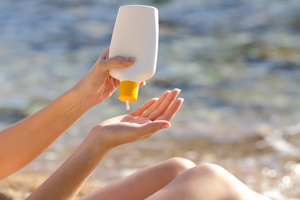 A survey conducted by Consumer Reports showed that the most important contributing factor in deciding which sunscreen to buy was its SPF. After testing the SPF claims, however, only 2 out of the 20 tested actually protected at the advertised level. Most of the products tested between 4%-40% below the SPF they claimed.
A survey conducted by Consumer Reports showed that the most important contributing factor in deciding which sunscreen to buy was its SPF. After testing the SPF claims, however, only 2 out of the 20 tested actually protected at the advertised level. Most of the products tested between 4%-40% below the SPF they claimed.
Here are 5 surprising discoveries from the study that dispel common myths:
- Advertised SPF levels are not accurate in the majority of cases
- Spray sunscreens do not provide the most effective coverage
- “Natural” sunscreens are not safer than other sunscreens
- Mineral based sunscreens are not more effective than other sunscreens
- In most cases there is no significant difference between sunscreens for adults and children
Remember that SPF refers only to UVB rays, not UVA, but both types can cause skin cancer. A sunscreen rated as “broad-spectrum” should protect against both kinds of rays. Additionally, a sunscreen that has an SPF that is twice as high as another does not mean it provides twice the protection. For example, a sunscreen with SPF 50 provides 98% protection from UVB rays while one with SPF 30 provides 97%!
To read the full report click here.
